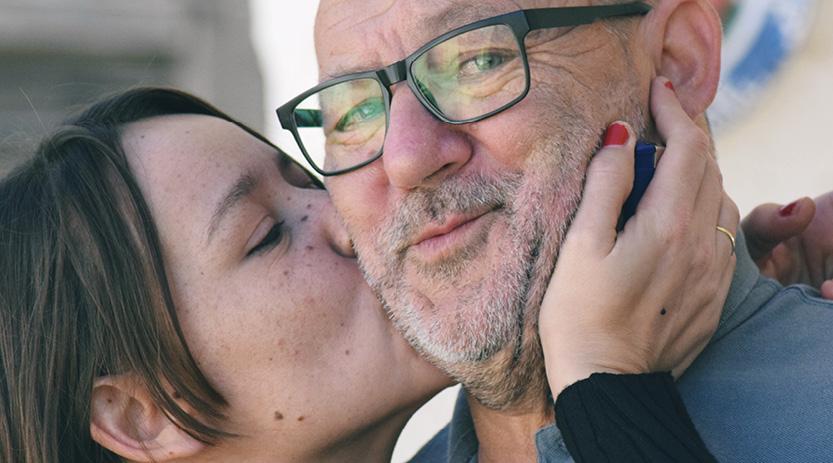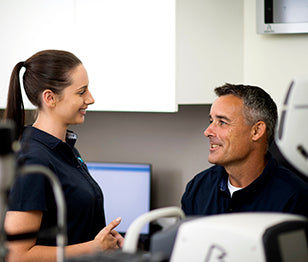Dealing with retinal detachment

A retinal detachment is a medical emergency which needs to be treated immediately. It happens when the retina (the curved back layer of the eye) peels away from its supportive tissue. Known as the choroid, this tissue gives the retina the oxygen and nutrients it needs to stay alive and function.
It’s really important it’s treated urgently as it can mean vision loss or permanent blindness in the affected eye.
What causes it?
It’s actually quite rare - affecting about 1 in 10,000 people every year. Age is the main risk factor with the majority of cases occurring in people over 60.
Those who have had a previous retinal detachment, a family history, severe short-sightedness (myopia), cataract surgery, or a severe eye injury or disease are also at an increased risk.
How do I know if I have it?
Call an optometrist or ophthalmologist (eye specialist) immediately if you have a sudden onset of any of the following symptoms:
- Flashes of light, moving specks or cobwebs in one eye
- Changes to peripheral vision
- Sudden deterioration or loss of vision
- A curtain-like shadow in your field of vision
What causes retinal detachment?
There are three main types of retinal detachment.
Rhegmatogenous
This is the most common and happens because of ageing. As we get older the gel like material which fills the inside of the eye (vitreous gel) can shrink or change causing the retina to tear or become weakened. This means fluid can pool under the retina and cause it to pull away from its supportive tissue.
Exudative
If someone has an eye injury or age-related macular degeneration, it can make fluid build up under the retina. In rare cases a tumour or inflammatory disorder can be the cause.
Tractional
This is where scar tissue grows on the retina, causing it to pull away from the back of the eye. It’s usually seen in people with diabetic retinopathy or other conditions which aren’t well managed.
How do you treat it?
A detached retina requires surgery to reposition the retina against the back of the eye.
It’s definitely a case of the sooner the surgery is performed the better. The type of surgery needed depends on the individual as each case is different.
Most people will get a local anaesthetic, meaning you’ll be awake for the procedure but feel no pain. Though in some cases a general anaesthetic might be needed.
Vitrectomy
This is the most common procedure. Here, the vitreous gel which fills the inside of the eye is removed and replaced with a gas bubble or silicone oil. This gas bubble or oil holds the retina in place so it can heal.
Pneumatic Retinopexy
If the detachment is small and uncomplicated, your ophthalmologist may use a gas bubble to push the retina into place. Within a few weeks the gas will reabsorb into the eye.
Scleral Buckle
In some cases, a band of silicone is attached to the outside of your eyeball to gently push the eye inward. This pressure can help the detached retina heal against the back of the eye. You can’t see it and it’s usually left on the eye permanently.
You can’t prevent a retinal detachment but your optometrist may be able to detect it early at your comprehensive eye exam.

We're here to help
Make sure you book an eye test every two years or as recommended by your optometrist.
You might also like to read...
View all-
Understanding astigmatism
There’s a good chance you’ve heard of astigmatism before. It’s a common eye condition that causes blurred vision, discomfort in your eyes and headaches.
Eye conditionsUnderstanding astigmatism
There’s a good chance you’ve heard of astigmatism before. It’s a common eye condition that causes blurred vision, discomfort in your eyes and headaches.
Read more -
Learning more about cataracts
You’ve probably heard of cataracts – when the normally clear lens of the eye becomes cloudy. It happens because the lens becomes hardened, and it means a gradual decrease in...
Eye conditionsLearning more about cataracts
You’ve probably heard of cataracts – when the normally clear lens of the eye becomes cloudy. It happens because the lens becomes hardened, and it means a gradual decrease in...
Read more -
The ins and outs of colour deficiency
You might know colour deficiency by its other name – colour blindness. This name isn’t technically correct, as most people living with colour deficiency can actually still see colours.
Eye conditionsThe ins and outs of colour deficiency
You might know colour deficiency by its other name – colour blindness. This name isn’t technically correct, as most people living with colour deficiency can actually still see colours.
Read more





